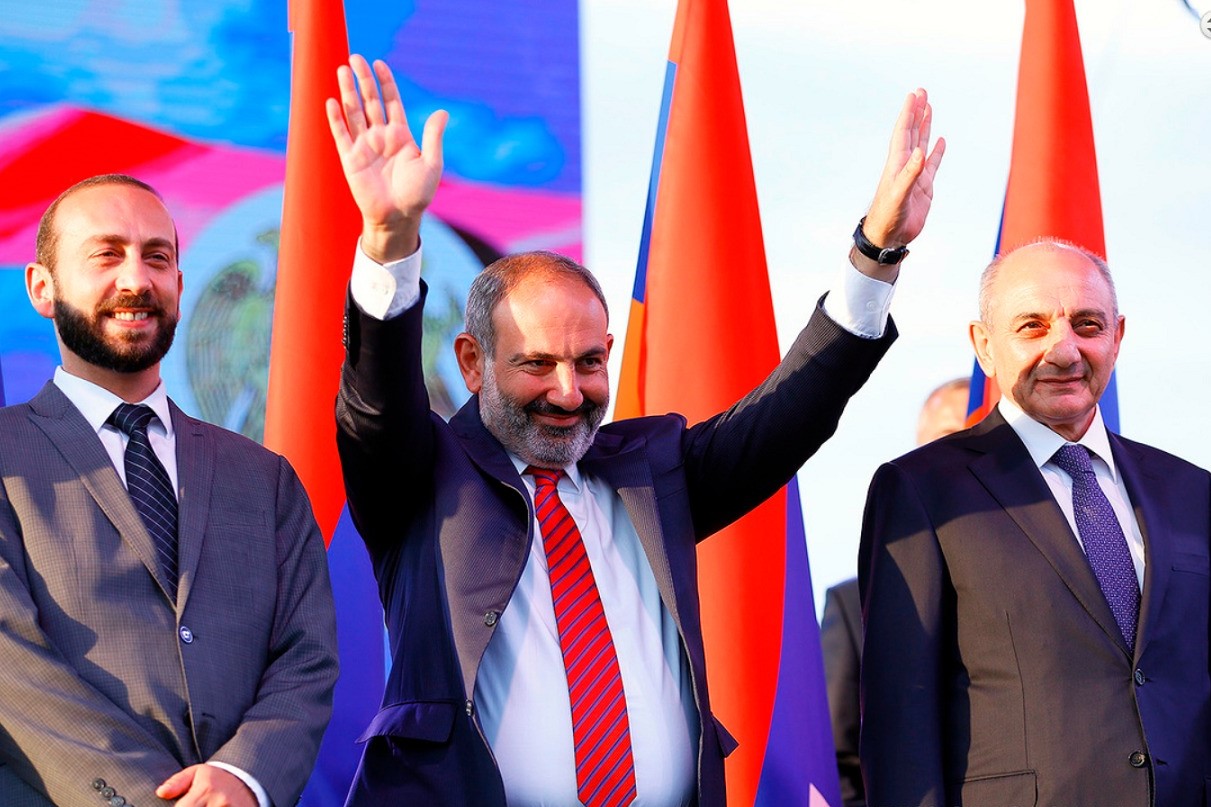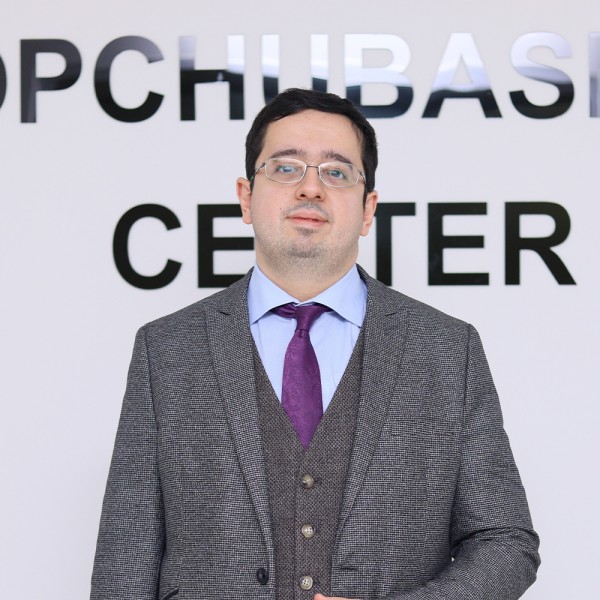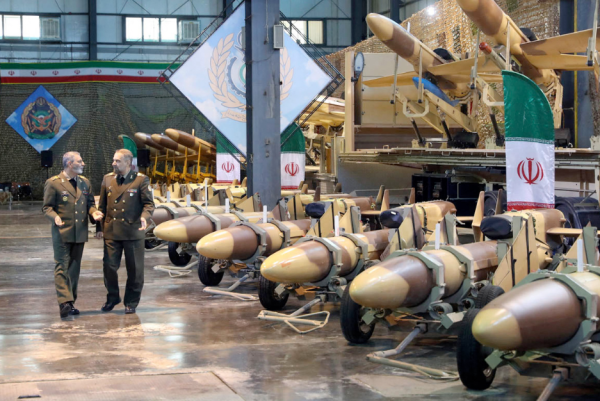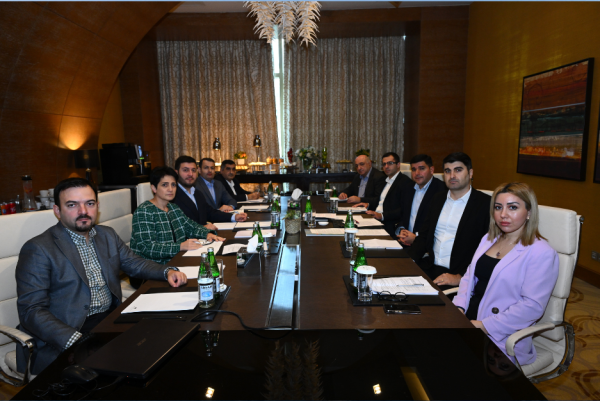Structural reasons of the failure of Nagorno-Karabakh peace process

Photo: Armenian Prime Minister Nikol Pashinyan in Nagorno-Karabakh in August 2019. Press Office of the Government of the Republic of Armenia
Around 6 a.m. on September 27 intensive fighting, featuring large-caliber weapons, mortar launchers and artillery, erupted along the line of contact between Azerbaijan and its separatist territories controlled by Armenia and its satellite, self-proclaimed “Nagorno-Karabakh Republic”. Both sides would later declare the adversary responsible for breaking the ceasefire. Severe shelling of the Azerbaijani villages close to the frontline resulted in a number of casualties among civilian Azerbaijani population. The response of Azerbaijani forces grew into a large-scale offensive which is undoubtedly the most intense episode of fighting since the 1994 ceasefire and is widely called a full-fledged war. On September 27, Yerevan announced general mobilisation, while Baku has so far called a partial one. The sides to the conflict deny most of each other’s statements regarding the fighting, however, most probably Azerbaijan has succeeded in taking back seven villages in the Fizuli district (the south-eastern tip of the occupied zone) as well as a number of heights of strategic importance and fortifications and inflicted considerable damage on several units of the Armenian armed forces. However what all experts agree upon, is that the conflict over Nagorno-Karabakh, one of the most protracted ones in the world, has entered a qualitatively new phase and absolutely new solutions must be offered to make a new peace process possible.
Outside observers often find it difficult to understand why the Armenian-Azerbaijani conflict has been so intractable and resisted peaceful resolution. Shortly, it is the combination of several complicating factors: exclusive and radical version of nationalism preached by the Armenian side; the factor of Russia which has capitalized on the hostile status-quo to entrench the dependence of both Azerbaijan and Armenia for its security guarantees; and, maybe most importantly, the blatant disengagement of the international community from the genuine peace process. Taken together, these three factors have formed a rock-solid perception in the mind of the both peoples and national elites that the conflict has no viable or acceptable resolution. Now we have to live through the bitter consequences of this situation.
Incompatible positions and conflict of principles
First of all, the conflict which started with the demands of the then-existing NKAO (Nagorno-Karabakh Autonomous Oblast) to be transferred from the Azerbaijani SSR to the Armenian SSR in early 1988, has always featured hardly сompatible demands and approaches of the two sides. For Armenians, the issue of Nagorno-Karabakh from the very beginning has been deeply intertwined with the narrative of a victimized, vulnerable Christian people persecuted by Turks (in the worldview of Armenian nationalism, Azerbaijanis are almost the same people) and facing an existential threat to its historical and even physical survival. At the same time, Azerbaijan used to be one of the most multinational republics in the Soviet Union, and it took a long time for Azerbaijanis to realize the intensity of Armenian nationalist feeling and hence, the irredentists’ motives. That’s why the Azerbaijanis’ natural unwillingness to unilaterally concede was interpreted by the other side as imminently hostile, and very soon the full-fledged ethnic conflict erupted. By the end of 1989, almost all Azerbaijanis had already fled Armenia and NKAO (where they constituted a substantial minority of 23%), and a year later almost all Armenians had to leave Azerbaijan. The ceasefire in 1994 which stopped a protracted, bloody war that featured many episodes of outrageous crimes against humanity (the worst one being the murder of 613 Azerbaijanis in Khojaly in February 1992) was caused by extreme exhaustion of the both sides from heavy losses and desperate economic conditions rather than willingness to achieve ultimate peace.
Ever since then, the demands put forward by the Armenian side as a prerequisite to peace have always been at least one step further than the maximum concessions Azerbaijan was able to make. The parties built major arguments in their favour within very different frameworks; while Baku has insisted on its territorial integrity within the borders of Soviet Azerbaijan, Armenia advocated for the self-determination of the “people of Nagorno-Karabakh” (understanding it in a merely ethnic sense, which was in itself quite contradictory) and also heavily referred to the vague and extralegal concept of “historical rights” over the territory. Moreover, in response to Baku’s more assertive attempts to shift the negotiation balance in its favour, Yerevan only became more intransigent and from a certain moment started to raise demands which were perceived by Azerbaijan as a deliberate sabotage of the peace process. While during the presidencies of Ter-Petrosyan and Kocharyan the return of seven regions occupied by Armenian forces beyond Nagorno-Karabakh was a more or less consensus option for the country’s elites, since President Sargsyan’s entry into power the Armenian government, as well as the society at large, started a process of “nativisation” of these regions. Places which had had very little Armenian population before the conflict and would mostly remain a barren no-man land used for tactical military purposes, started to receive Armenian names and gradually merged into the space of the unrecognized separatist “Nagorno-Karabakh Republic”. Polls in 2018 indicated that an overwhelming majority of Armenians were against giving these territories back.
This radicalisation, put against the backdrop of growing political and economic advantage of Azerbaijan over its rival and dramatically increasing importance of Turkey in the region, created a very dangerous and inflammable situation that resulted in major outbreaks of hostilities in 2014 and 2016. The arrival of Nikol Pashinyan, riding the wave of the “Velvet Revolution”, initially gave hope to Azerbaijan that constructive dialogue can be restored. Some of the statements the new leader made about “preparing the peoples for peace”, as well as the establishment of effective mechanisms for a quick reaction to armed incidents along the line of contact, seemed to represent a major shift. However, facing a significant domestic opposition, he found nothing better to do than to resort to radical nationalist rhetoric, claiming at the rally in Khankendi (or Stepanakert, the “capital” of the unrecognized republic) that “Karabakh is Armenia, full stop”. This, and some of his further steps, destroyed his reputation as a pragmatic and consistent leader in the eyes of Azerbaijani leadership and revealed deep contradictions in Yerevan’s negotiation posture.
Elephant in the room: Moscow’s role
The second major factor behind the severity of the Armenia-Azerbaijan conflict is the role of Russia. Unlike the wars Georgia and Ukraine waged in their secessionist regions, in Nagorno-Karabakh Russia has never been a direct party to the conflict. Instead, it chose not to simply support one side against another, but to support and sustain the conflict itself as a perfect tool of influence. Moscow used this chronic wound of the region to exert pressure on both Baku and Yerevan and keep the two countries tied to itself with various ropes. Capitalising on the lukewarm attitude of the Western powers to the regional problems, Moscow has positioned itself, ever since the ceasefire negotiations, in Bishkek as the critical mediator inevitable for keeping the rivals from fighting. Several small-scale escalations, particularly the one in April 2016, served to entrench this perception both in the region and outside. As one of the biggest arms producer in the world, Russia has always been happy to supply the countries with arms in the vicious cycle of igniting and soothing the sense of insecurity.
All these years when domestic and foreign policy of Armenian and Azerbaijan have been fundamentally tied with the unresolved territorial problem created a sense of Moscow’s inevitability as an arbiter and security guarantor, undermining any meek hopes that existed in the 1990’s for building robust regional mechanisms of security and cooperation. British researcher Laurence Broers characterized Russian policy towards the two countries as “pivotal deterrence”, whereas the ever-present threat to support another side if one of the parties restarts hostilities would keep them from escalating. However, this temporary freezing of the conflict was achieved at the cost of gradually destroying all the channels of meaningful communication and made a major eruption in the conflict zone inevitable at some point.
Failure of multilateral diplomacy
Given both a very adverse dynamics on the ground, as well as the destructive role played by Russia, the only viable hope for a breakthrough has always rested with a pro-active and principled position of the larger international community regarding the issue. However, this hope would never come to fruition. Back in 1992, when the conflict was still in the phase of expansion, the OSCE established a special body in order to mediate between Azerbaijan and Armenia and help them in finding a solution. From the place of its first gathering, it was dubbed the Minsk Group. 28 years later, it still has to show any tangible success to include in its resume. Even the 1994 ceasefire agreement, which unfortunately remained the single most successful episode in the Armenian-Azerbaijani negotiations, was largely mediated by Russia.
Since then, the Minsk Group, co-chaired by Russia, U.S. and France, has become known for one particular skill: muddling through and avoiding any meaningful and innovative ideas. In fact, since the 2000’s the only mission of the group was to monitor the situation along the contact line, which in the absence of permanent international observers could have hardly exert any influence on the parties. The unchanging figure of Andrzej Kasprzyk, who has served as the OSCE Special Representative in the Minsk Group for 23 years, has become a staple of anecdotes. Mr. Kasprzyk’s visits, which for the last several years have exhausted the visible activity of the Group, became an increasingly irritating factor against the background of rising tensions and Baku’s growing sense of unfairness of the status-quo. In his article written as far back as 1996 , a U.S. Special Representative for Nagorno-Karabakh negotiations John Maresca pointed out to the perennial weaknesses of the Minsk Group, which was kept too low-key in its status, represented little political will of the countries which were supposed to stand behind it, and was constantly ridiculed and pushed back by high-level Russian authorities. However, its format and mandate have remained unchanged ever since.
The relative calm that reigned in the conflict zone between 1994 and 2014 was often presented as the success of diplomacy, which completely ignored the fact that this calm mainly had to do with the unwillingness of the both parties to risk renewal of hostilities as well as the specificities of unipolar global order which posed very hard obstacles to the use of power. As soon as this order started to give cracks after the Russian occupation of Abkhazia and South Ossetia in 2008, the whole balance of power shifted and it suddenly turned out that large-scale violence in Nagorno-Karabakh is possible and the Minsk Group is badly equipped to prevent it. Given the growing polarisation in the world between major centers of power, the fact that three co-chairs of the Group have retained miraculous unanimity on the peace process, attests not to its success but rather the careless and superficial attitude of the international community as big countries simply didn’t bother to clash over such an “unimportant” matter. This development has strong parallels with the quagmire that is gradually sinking another Minsk process- the one that was convened to resolve the Donbass conflict. The reaction of the three co-chair countries to the current escalation exemplifies the reasons why it cannot be an efficient tool: Russia provides huge amounts of arms supplies to Armenia and then prefers to do nothing except for expressing its “deep concern”, while France openly endorses Yerevan by promising to prevent the restoration of Azerbaijani territorial integrity by force (without offering means to do it peacefully), and U.S. seems not to be in the least bothered.
The United Nations have been no better in finding the way out of this impasse. The Security Council was seemingly very active during the most intensive phase of the war in 1993 and issued four resolutions (N 822, 853, 874 and 884) which emphasized commitment to the territorial integrity of Azerbaijan and called for the withdrawal of Armenian paramilitary forces from Kalbajar, Aghdam, Fizuli, Jabrayil, Gubadly and Zangilan regions. However, these benign declarations would not materialize. The Nagorno-Karabakh problem never found its Dayton: the global powers simply decided to freeze the conflict until better times, which, as it is clear now, would never come.
The international community's lukewarm efforts to resolve the conflicts in the South Caucasus, perceived as a deep backwater, represented an obvious contrast to its active position on the Yugoslavian wars, which were unfolding in the immediate vicinity of the West. In the above-mentioned article, Ambassador Maresca openly claims that the Nagorno-Karabakh peace process was left by the West to Russia as a сonsolatory prize, as it took the biggest one- Yugoslavia. These double standards left a lasting scar on the societies and political elites of Azerbaijan and Armenia and put significant obstacles to their normal development. In Azerbaijan, this attitude instilled a conviction of the profound injustice of the world order, as well as its inability to be inclusive and serve the most pressing needs of small nations. It has been widely perceived that calls for peace and reconciliation without putting any pressure on Armenia to make necessary compromises- liberate at least seven adjacent districts around Karabakh and start the process of the return of IDP’s to their homeland- merely disguised the cynical worldview where conflicts and suffering which did not immediately harm big powers, don’t really matter. In Armenia, getting away unpunished after having gained three times more territories than initially planned and having committed a number of war crimes, created a growing sense of “justice by force”, the normalisation of the conflict outcomes by the mere fact that the world makes no tangible efforts to resolve it. These feelings among Armenians gradually led to the triumph of the maximalist position that they have no need to compromise at all. This “double movement” in the conflicting countries narrowed down the negotiation space until in the 2010’s it was no more possible for Azerbaijani and Armenian leaders to find common language. As British expert Tom de Waal writes, the last round of substantial negotiations with the potential to come to an ultimate solution took place in Key West in 2001, when Azerbaijan was still represented by the previous President Heydar Aliyev. In almost 20 years since then, the peace process got less and less substantive, and after the 2012 Sochi meetings between the leaders of Russia, Azerbaijan and Armenia it wouldn’t be paid even lip service (excluding the short-lived period of false hopes in 2018). That’s why in his first statements after the escalation of violence Azerbaijani President Aliyev emphasized the ultimate failure of old formats which have utterly discredited themselves.
Hence, the fierce fighting that has erupted in the conflict zone is primarily an outcome of the chronic mismanagement of the peace process. It has further demonstrated the deep hypocrisies and contradictions that the beneficiaries of the current world order have long tried to sweep under the carpet. Abstract and toothless calls for peace in the situation when the status-quo is deeply skewed in favour of one party at the expense of the other, in fact encourage the aggressor which can pose as peace-loving for the mere reason that it has already gained everything it wanted, by force- and at the same time alienate the losing side whose calls for restorative justice can be easily presented as aggressive. Promotion of ultra-pacifism in such a situation legitimizes post-factum the use of force and “the right of force”. Although some politicians and experts used to warn for many years that this approach is unsustainable, only now the international community starts to recognize the risks it bears. So, in order to prevent the conflict from further escalating, and prevent other “boiling” conflicts from such unfortunate developments, interested parties must urgently deploy qualitatively better efforts than they have done for the 26 years that passed, and stop engaging in self-deception by confusing the lack of war with peace and equating parties which are in an inherently unbalanced position.







